#Sco OB2
Text
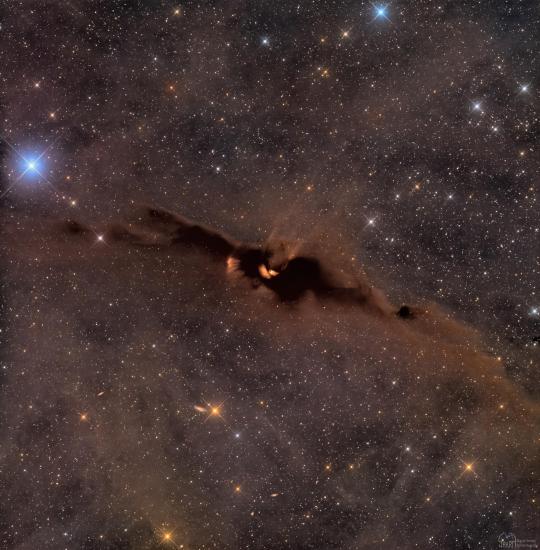
The Cosmic Bat - LDN43 !
The bat-shaped molecular condensation appears to be an evolutionary gradient along the isolated filament in which LDN43 is embedded, itself part of the Sco OB2 complex (group of young, hot, and massive stars of class O and B, the brightest in the sky).
The Sco OB2 complex is a large star-forming region centered in the constellation Scorpius. It is the closest cloud to us and it is one of the most spectacular and photographed areas of the entire Milky Way. It is full of molecular clouds and dust, young and massive star clusters, emission, and reflection nebulae.
Courtesy: Massimo Di Fusco
#art#cosmos#cosmic#universe#blast#space#photography#stars#cosmic bat#bat#molecular#LDN43#Sco OB2#massimo di fusco
11 notes
·
View notes
Photo
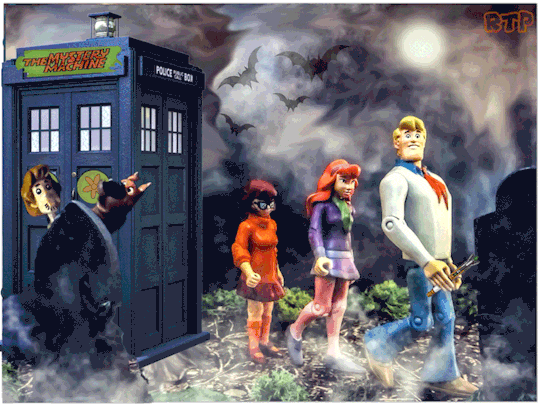
Scooby Doo and The Gang join Doctor Who as their new companions exploring Terra Galactica. They were last seen in the forests of SCO OB2 east of Lake California traveling south to VEL OB2.
Original Scooby Doo Flickr image by Rooners72 at https://flic.kr/p/DZCXaF
Tardis Image by miloscreative art at https://www.deviantart.com/miloscreativeart/art/Doctor-Who-Tardis-Transparent-374856949

Terra Galactica Galaxy Map is a fantasy map based on real data from the European Space Agency’s Gaia mission.
https://mastodon.social/@galaxy_map/109619664443605961
1 note
·
View note
Text
Surround & Squash: The Interstellar Medium around Scorpius Centaurus OB2. (arXiv:1808.04788v1 [astro-ph.GA])
We exploited observational constraints on stars, gas and nucleosynthesis ashes for the closest region of recent massive-star formation, Scorpius-Centaurus OB2, and combined them with 3D hydrodynamical simulations, in order to address physics and history for the case of the Scorpius-Centaurus superbubble. We used published cold gas observations through PLANCK survey data processing, HERSCHEL and APEX, continuum and molecular line observations. We analysed the Galactic All Sky Survey (GASS) to investigate shell structures in atomic hydrogen, and used HIPPARCOS and Gaia data in combination with interstellar absorption against stars to obtain new constraints for the distance to the Hi features. Hot gas is traced in soft X-rays via the ROSAT all sky survey. Nucleosynthesis ejecta from massive stars were traced with new INTEGRAL spectrometer observations via 26Al radioactivity. We also performed 3D hydrodynamical simulations for the Sco-Cen superbubble. To investigate the impact of massive star feedback on extended clouds, we simulate the interaction of a turbulent cloud with the hot, pressurised gas in a superbubble. The hot gas fills the tenuous regions of the cloud and compresses the denser parts. Stars formed in these dense clumps would have distinct spatial and kinematic distributions. The combined results from observations and simulations are consistent with a scenario where dense gas was initially distributed in a band elongated in the direction now occupied by the OB association. Superbubbles powered by massive stars would then repeatedly break out of the elongated parent cloud, surround and squash the denser parts of the gas sheet and thus induce more star formation. The expected spatial and kinematic distribution of stars is consistent with observations of Sco-Cen. The scenario might apply to many similar regions in the Galaxy and also to AGN-related superbubbles.
from astro-ph.HE updates on arXiv.org https://ift.tt/2OBEMpL
0 notes
Photo
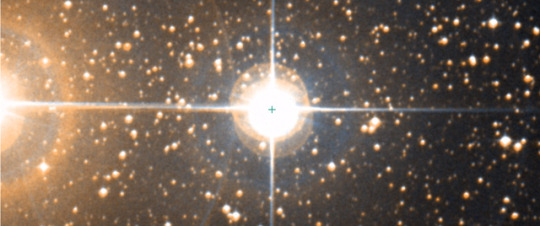
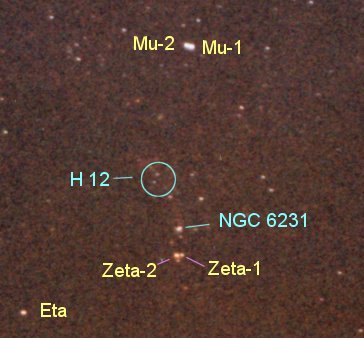
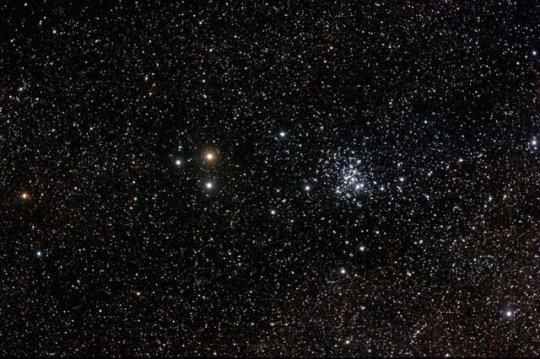
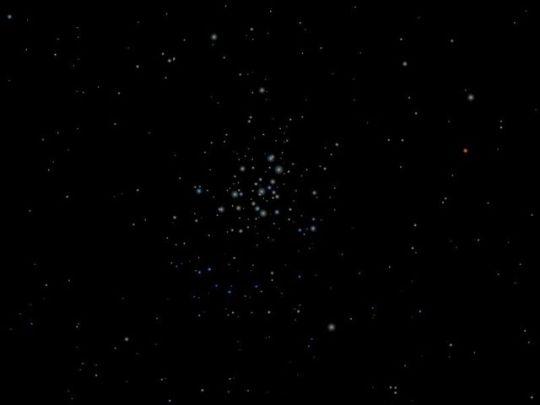
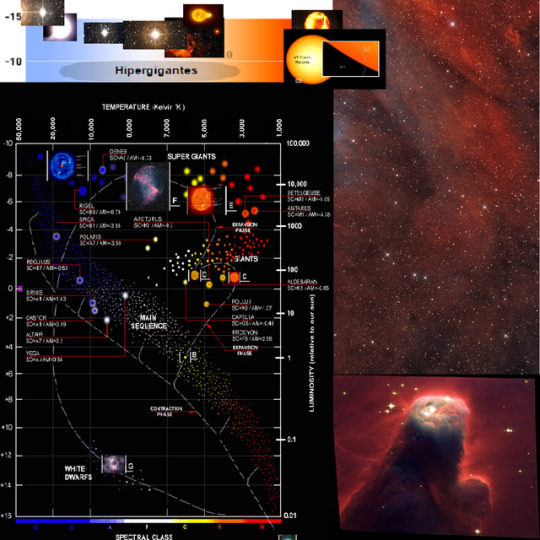
29.4.1 ESTRELLAS HIPER-GIGANTES AZULES: Zeta1 Scorpii.
Zeta1 Scorpii (ζ1 Sco / HD 152236 / HR 6262) es una estrella en la constelación de Scorpius. el escorpión, de magnitud aparente +4,77. Se encuentra separada 7 minutos de arco de ζ2 Scorpii, con la que no está físicamente relacionada. Mientras esta última se encuentra a 150 años luz, Zeta1 Scorpii es una estrella muy alejada cuya distancia sólo puede ser conocida por aproximación. Perteneciente a la asociación estelar Scorpius OB1 y posible miembro del cúmulo abierto NGC 6231, puede estimarse su distancia a la Tierra en 5700 años luz.
Zeta1 Scorpii es una hipergigante azul de tipo espectral B1Iape con una temperatura de 21.000 Kº. Situada cerca del centro de la galaxia, aparece de color blanco-amarillo en vez de azul debido a la existencia de nubes de polvo entremedias. Su luminosidad —considerando la radiación ultravioleta emitida y la absorción de luz debida a polvo interestelar— puede alcanzar un millón y medio de veces la luminosidad solar, haciendo de Zeta1 Scorpii una de las estrellas más masivas de la Vía Láctea, con una masa de unas 60 masas solares. Esta enorme luminosidad la sitúa como una potencial variable luminosa azul, como P Cygni, perdiendo masa estelar a un ritmo de una cienmilésima de la masa solar por año, arrastrada por un viento estelar que sopla desde su superficie a una velocidad de 400 km/s. Estrellas de estas características sólo viven unos pocos millones de años —el hidrógeno interno se consume muy rápidamente— para explotar después como brillantes supernovas.
En la última imagen el Diagrama de Hertzsprung y Russell clásico. En el mismo observamos, de derecha a izquierda, del espectro M al espectro O (del rojo al azul); en el espectro M a la estrella NML Cygni con una temperatura inferior a los 3.000 Kº , también dentro del espectro M vemos a la impresionante VY Canis Majoris con una temperatura de 3.490 Kº. En el espectro K y dentro del rango Hipergigante roja todavía vemos a RW Cephei con una temperatura de 4.015 Kº. Llendo por la rama de las hipergigantes, y ya en el rango hipergigantes amarillas y en el espectro G observamos a la estrella V766 Centauri con una temperatura de 5.000 Kº. A la estrella Rho Casiospea también dentro del mismo rango y con espectro G2la y una temperatura de 7.300 Kº. Más hacia la inmediata izquierda observamos a la estrella 6 Casiospea, dentro del rango Hipergigante Blanca y ya en el espectro A3la con una temperatura de 9.330 Kº. En loso extremos izquierdos del Diagrama H-R ofrecido tenemos dentro del rango Hipergigante Azul, vemos a la estrella Cygnus OB2 12 con tipo espectral OB2 y una temperatura de 18.500 Kº; y finalmente hacia el extremo izquierdo del Diagrama H-R está la estrella Zeta1 Scorpii con espectro OB1 y una temperatura de 21.000 Kº.
0 notes